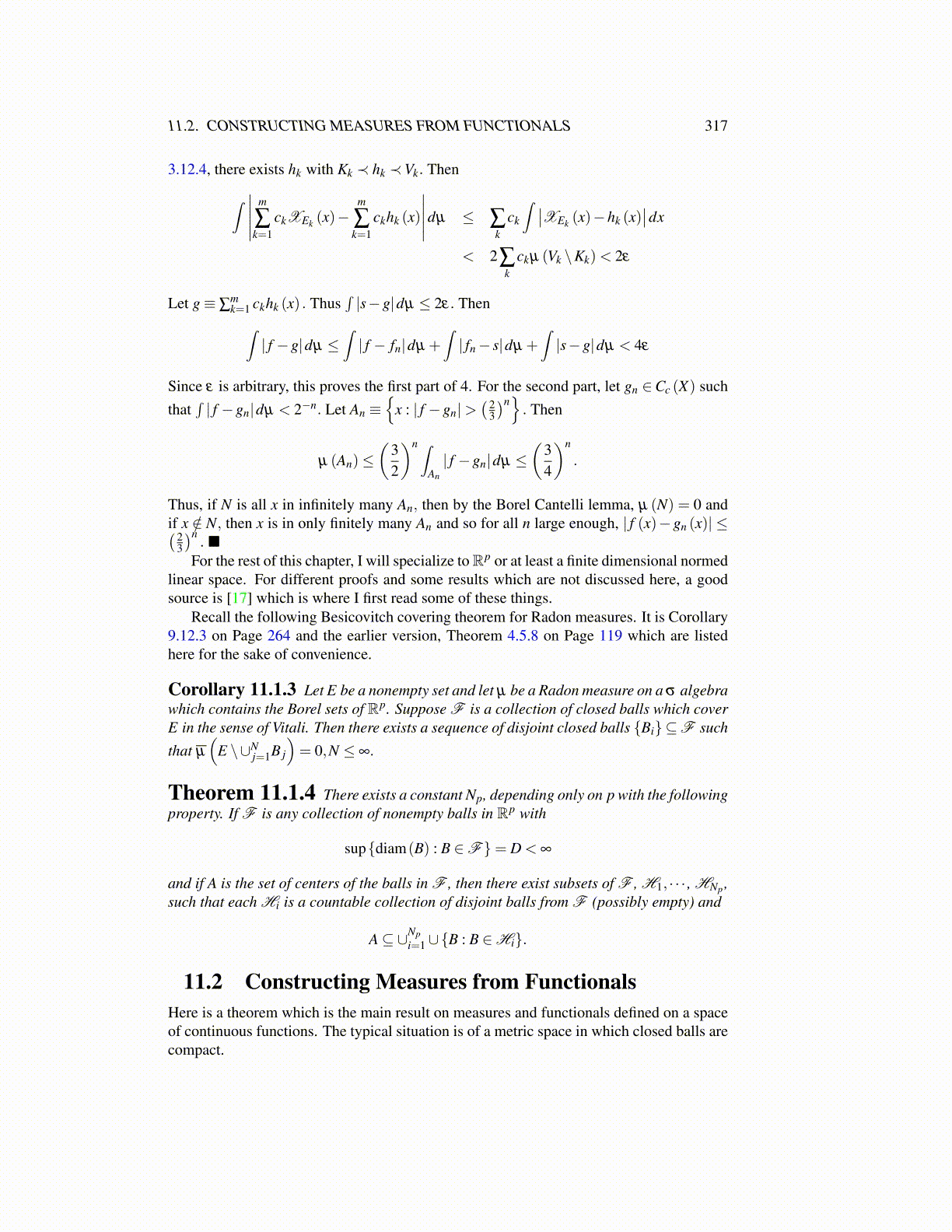
11.2. CONSTRUCTING MEASURES FROM FUNCTIONALS 317
3.12.4, there exists hk with Kk ≺ hk ≺Vk. Then
∫ ∣∣∣∣∣ m
∑k=1
ckXEk (x)−m
∑k=1
ckhk (x)
∣∣∣∣∣dµ ≤ ∑k
ck
∫ ∣∣XEk (x)−hk (x)∣∣dx
< 2∑k
ckµ (Vk \Kk)< 2ε
Let g≡ ∑mk=1 ckhk (x) . Thus
∫|s−g|dµ ≤ 2ε. Then∫
| f −g|dµ ≤∫| f − fn|dµ +
∫| fn− s|dµ +
∫|s−g|dµ < 4ε
Since ε is arbitrary, this proves the first part of 4. For the second part, let gn ∈Cc (X) suchthat
∫| f −gn|dµ < 2−n. Let An ≡
{x : | f −gn|>
( 23
)n}. Then
µ (An)≤(
32
)n ∫An
| f −gn|dµ ≤(
34
)n
.
Thus, if N is all x in infinitely many An, then by the Borel Cantelli lemma, µ (N) = 0 andif x /∈ N, then x is in only finitely many An and so for all n large enough, | f (x)−gn (x)| ≤( 2
3
)n. ■
For the rest of this chapter, I will specialize toRp or at least a finite dimensional normedlinear space. For different proofs and some results which are not discussed here, a goodsource is [17] which is where I first read some of these things.
Recall the following Besicovitch covering theorem for Radon measures. It is Corollary9.12.3 on Page 264 and the earlier version, Theorem 4.5.8 on Page 119 which are listedhere for the sake of convenience.
Corollary 11.1.3 Let E be a nonempty set and let µ be a Radon measure on a σ algebrawhich contains the Borel sets of Rp. Suppose F is a collection of closed balls which coverE in the sense of Vitali. Then there exists a sequence of disjoint closed balls {Bi} ⊆F such
that µ
(E \∪N
j=1B j
)= 0,N ≤ ∞.
Theorem 11.1.4 There exists a constant Np, depending only on p with the followingproperty. If F is any collection of nonempty balls in Rp with
sup{diam(B) : B ∈F}= D < ∞
and if A is the set of centers of the balls in F , then there exist subsets of F , H1, · · · , HNp ,such that each Hi is a countable collection of disjoint balls from F (possibly empty) and
A⊆ ∪Npi=1∪{B : B ∈Hi}.
11.2 Constructing Measures from FunctionalsHere is a theorem which is the main result on measures and functionals defined on a spaceof continuous functions. The typical situation is of a metric space in which closed balls arecompact.